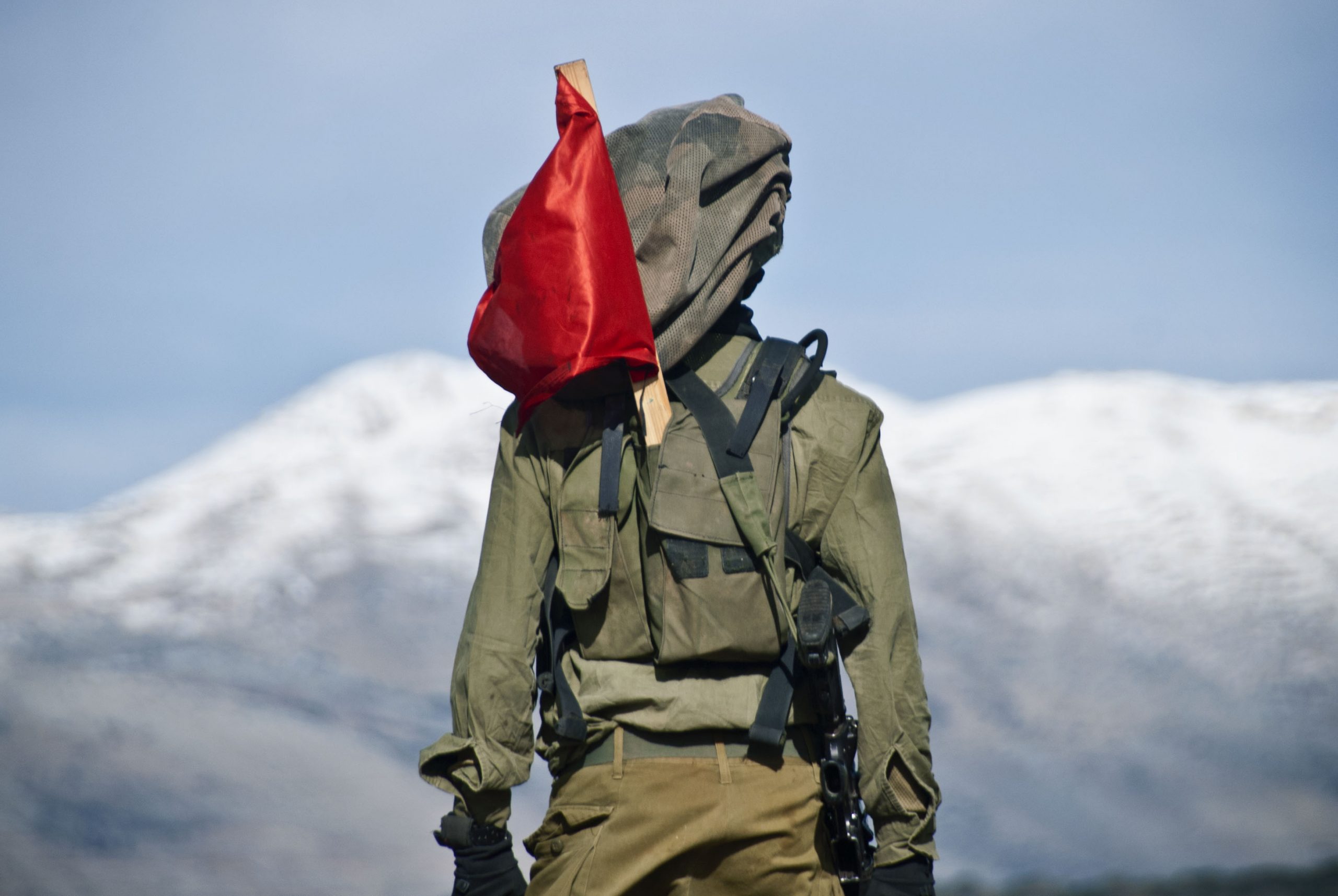Publications
Special Publication, December 23, 2021
In February 2019, on the eve of the dissolution of the 20th Knesset and the first of the recurring elections that paralyzed the political system in Israel, MK (and today Minister of Public Security) Omer Bar Lev and I issued a report about the ground forces, the need to decide about their role in military campaigns, and on that basis, the ensuing plans for military buildup. In the years prior we headed the two relevant subcommittees of the Foreign Affairs and Defense Committee – I was the head of the Subcommittee on Defense Doctrine and Military Buildup, and Bar Lev was the head of the Subcommittee for Readiness and Continuous Security. The document was distributed to decision makers in a classified version, which included extensive reference to specific projects and existing operational plans; the public version presented the conceptual questions and a proposal for a clear decision.
In the two and a half years since then, the need to make significant decisions on this issue has only intensified. Current Chief of Staff Lt. Gel. Aviv Kochavi has in effect operated from the first day of his term without an approved multi-year budget and multi-year plan for military buildup. In the meantime, Operation Guardian of the Walls demonstrated what the IDF really thinks about the ground forces in combat – despite the lofty rhetoric about their importance – and how this situation impacts on achievements in campaigns.
Therefore, with the agreement of Minister Bar Lev, I thought it appropriate to bring the document to the attention of decision makers and the public in an updated and unclassified version, in the hope that this time it will indeed serve as a basis for serious discussion and decisions that have been delayed for decades – a delay that casts a shadow on the future of the majority of the IDF’s fighting force and on national security.
The issue of the ground army – its size, make-up, and relevance in the IDF's expected future campaigns, and above all, the willingness to use it – has been at the heart of a debate inside and outside the military for at least the past three decades. The debate assumed greater urgency after the Second Lebanon War and the rounds of conflict in the Gaza Strip that followed. The dissolution of Syria led to the disappearance of the last major regular army on Israel's borders. Meanwhile, a new kind of threat emerged in the north and the south: hybrid organizations that at once sport characteristics of an army, guerrilla warfare, and terrorism, and are armed with rockets that threaten all of Israel's territory. If the need for a strong ground army was clear in the face of the previous threat, the role of the ground forces in combat against the current threat is less clear.
In the most recent campaigns, both the political and the military leaderships hesitated to call for ground maneuver warfare. The reasons are well-known, and I will mention just two of them here: the fear of casualties (based on assessments of the public's sensitivity to combat casualties) and a lack of confidence in the result that would be achieved by the ground army under the conditions of the campaigns. In the Second Lebanon War and in Operation Protective Edge, the ground forces were ultimately used, after hesitation and delay, for unclear or controversial objectives, without real preparation in terms of intelligence, unit training, and combat doctrine. The mediocre results (regardless of the long-term results of the campaign) only strengthened the lack of desire to use the ground forces in the subsequent campaigns.
In Operation Guardian of the Walls most of the ground forces reservists were not mobilized, including elite brigades that are part of the IDF's front line of assault. A relatively large ground maneuver, which was meant to be part of a deceptive operation to lure Hamas underground and then attack it from the air, was not carried out at all – and as a result, the results of the aerial portion of the operation were quite limited in terms of striking Hamas operatives. The IDF hardly provided a satisfactory explanation for refraining from implementing the plan, which was intended as a central tool in attaining a substantive achievement in the campaign.
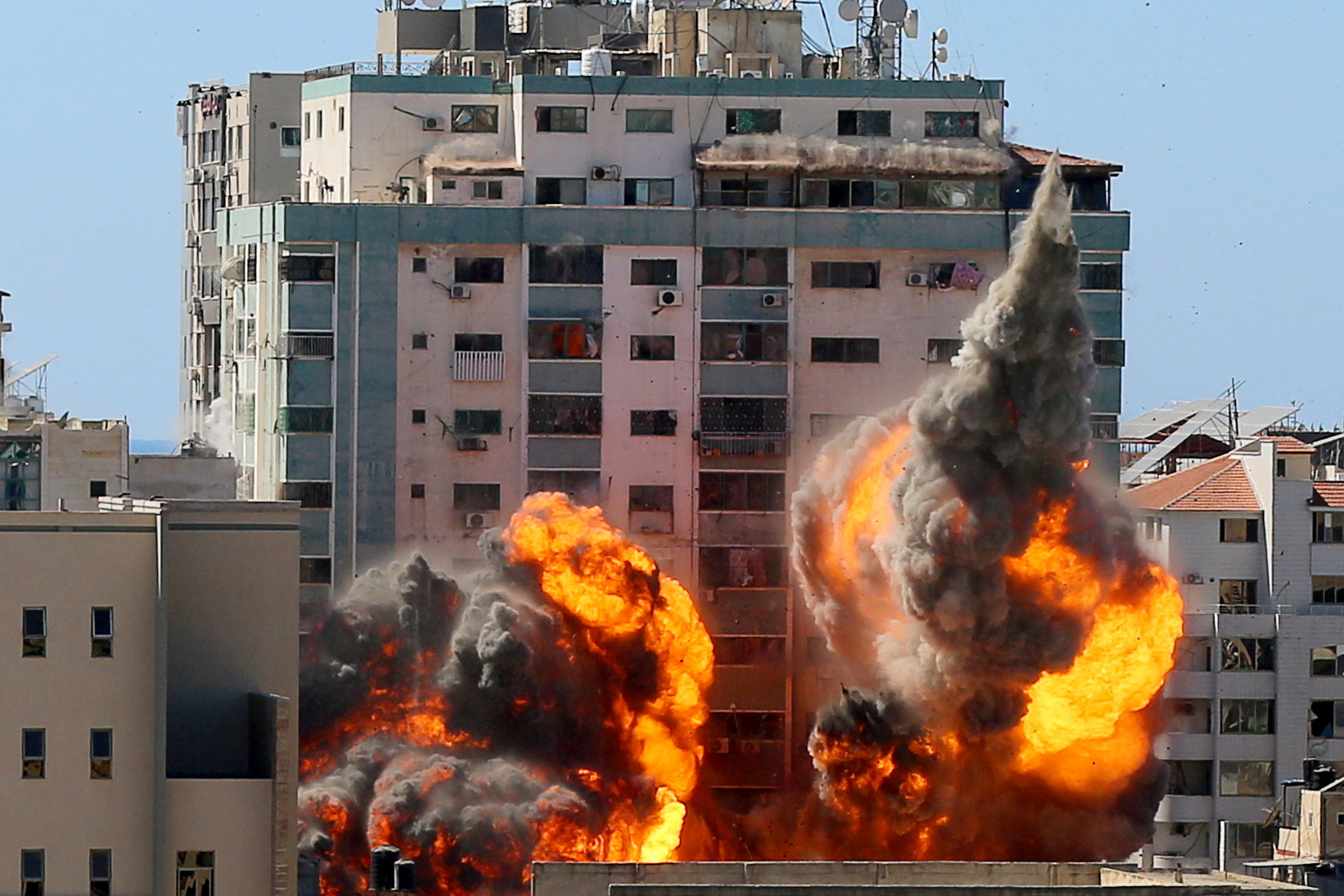
The Achievement Required of the IDF
Any discussion and decision about operational plans and the military buildup that is derived from them must begin with the achievement required of the IDF in a campaign. The campaign reference, namely, the campaign that must be prepared for, is a multi-arena scenario centering on war against Hezbollah and possibly other forces on the northern front.
Unlike the enemy that Israel faced during its first 50 years – large regular armies and motorized armored forces – the enemy facing us today in the various sectors is based on a kind of infantry framework, is qualitatively weaker than the IDF, and has a significantly smaller order of battle. The combat experience earned by Hezbollah in Syria (for which it also paid a significant price in casualties) does not close the power gaps with a modern army with aircraft, tanks, and superior intelligence. On the other hand, the enemy's ability to strike Israel’s civilian home front and infrastructure is immeasurably greater than the ability of the enemy of the past. This capability does not pose an existential threat to the State of Israel, but it is a significant threat to the civilian home front and to the state's functioning.
In the most current IDF Strategy from 2018, then-Chief of Staff Gadi Eisenkot defined the achievement required of the IDF in a campaign as a victory "that would be reflected in the enemy's inability, unwillingness, or both to operate against us, and inability to defend itself. The purpose of striving for such a victory is to strengthen deterrence and to change the strategic situation such that it is reflected in damage to the enemy's ability to rebuild militarily, and in long periods of calm following the conflict."
This is a fundamentally offensive approach that stems from the IDF's tradition and spirit, which are offensive and proactive. Bar Lev and I agree that this is indeed the right basis for the IDF's military buildup and its operation in a significant campaign. The achievement required in any campaign is a situation in which the answer to "who won" is not in doubt. Even if the enemy does not have a clear point of defeat, and even if the campaign does not end with its waving a white flag, the gap between the physical, political, and cognitive damage that it suffered and what was suffered by Israel must be unequivocal. In the last few campaigns, the security establishment has taken pride in the fact that most of Hamas's offensive intentions were thwarted. But this is insufficient. In any campaign, the necessary defensive achievement alone is not enough.
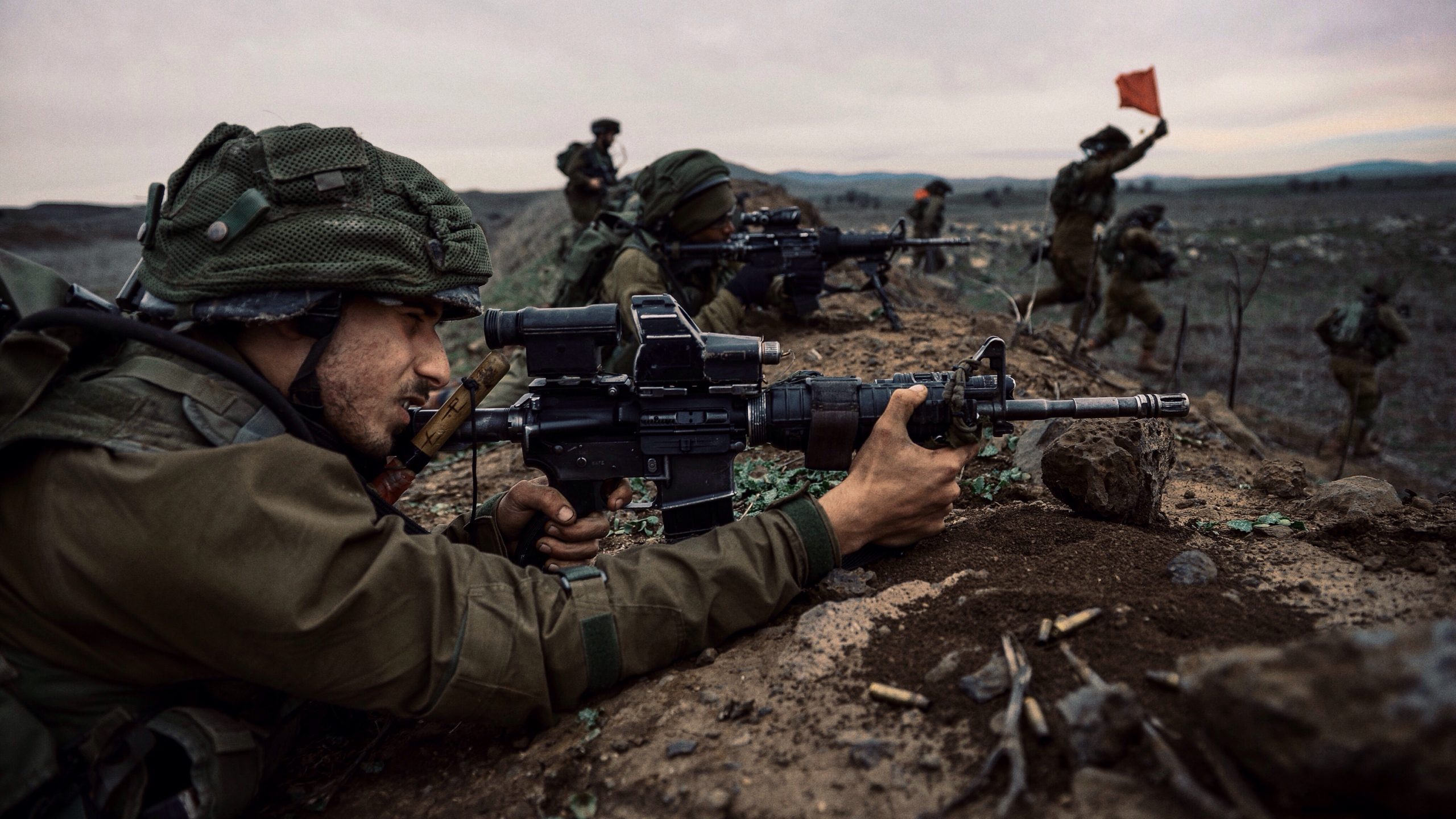
This leads to two fundamental insights:
- The current enemy's relatively high-level ability to attack the home front and Israel's civilian routine, and its staying power in employing firepower (certainly when it comes to Hezbollah) demands that the IDF's main mission be to defeat the enemy forces in the shortest possible time.
- The IDF's qualitative advantage over its enemies should free it from the need for a significant quantitative advantage at every point. The critical mass necessary for victory in battle does not have to be reflected in the number of weapons or soldiers, but rather in the immeasurably higher level of technological superiority, the advantage of connectivity and intelligence, the training of combat soldiers and commanders, and other factors that enhance the effectiveness of the fighting unit. The ground maneuver force must be flexible, fast, and agile. It must be based on the IDF's qualitative superiority over the adversary and much less on quantity, that is, the total order of battle of the maneuvering forces.
Thus, the achievement required of the army in a campaign is significant damage to the enemy within a short time that will block its desire and its ability to operate aggressively against Israel for a long time. To this end fast, lethal, and powerful maneuver warfare is necessary.
This must be the achievement required not only against the current reference enemies, Hezbollah and Hamas, but also if the Syrian army is rebuilt in the coming decade. While a regular Syrian army would bring back some of the challenges of the "big wars," the IDF is still well-prepared for these challenges today, with a variety of tools that were developed decades ago and with a huge advantage in intelligence and firepower. It is certainly possible that even a renewed Syrian threat would be more similar to the characteristics of Hezbollah (decentralization, deployment within urban space, and especially the high-trajectory threat to the Israeli home front).
Insights from Operation Guardian of the Walls
Operation Guardian of the Walls evolved into an extreme and bizarre situation: Israel waged a campaign in the physical realm, and struck Hamas's military capabilities and damaged its assets; while Hamas's campaign was waged almost entirely in the political-cognitive realm, where it reached unprecedented achievements – it positioned itself as the defender of Jerusalem, and for the first time succeeded in igniting the street and garnering identification with its cause both in the West Bank and especially within Israel. The IDF's use of firepower did not detract from Hamas's strategic achievements at all, and even amplified them.
Furthermore, recognizing Israel's superiority in intelligence and firepower, Hamas used most of its capabilities, including massive fire toward Jerusalem and central Israel, in the first few days of the campaign, in contrast with its operational doctrine in previous campaigns (and that of Hezbollah in the Second Lebanon War), whereby in the first few days it focused on rocket fire at the Gaza envelope and threatened that if the campaign continued it would expand the range. This operational doctrine led to Hamas reaching all of its achievements in the first few days of fighting; the IDF's subsequent actions did not diminish these achievements, nor did they cause Hamas damage that made it regret its actions.
Throughout the campaign, the security establishment contended that the damage to Hamas would restore Israeli deterrence. However, less than two months later, sources in the same security establishment reported that Yahya Sinwar, the leader of Hamas in Gaza, was elated and even "messianic" given what he perceived as his enormous achievement in the campaign, and willing to challenge Israel if his conditions for a ceasefire were not met.
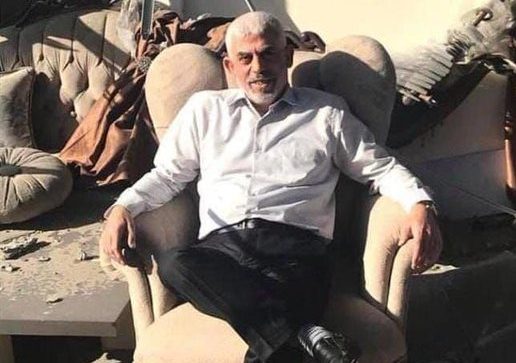
If Hezbollah operates according to the same operational doctrine in the northern scenario, the home front in Israel's north will suffer unprecedented amounts of fire, after which it is doubtful if there will be a way to avoid applying IDF force to the fullest, such that even those who seek to limit the campaign to standoff fire could, in all likelihood, find themselves dragged into a campaign that includes a large-scale ground operation.
In various statements by Israel’s political and military leadership, Hezbollah has been warned that the IDF’s ability to attack its strategic assets – such as in the destruction of its medium-range missile arsenal and the bombing the Dahiya quarter in the Second Lebanon War – has grown significantly in the past 15 years. There is no doubt about this, but the lesson of the Second Lebanon War is that even such strikes do not prevent the enemy from quickly adapting to the new situation, while persisting in fighting and causing considerable damage to the Israeli home front.
Operational Doctrine: "Stand-in" versus "Standoff"
The ongoing doctrinal debate on the issue of decision and victory, the optimal duration of combat, and the possible and necessary achievements can be summarized in the following question: is stand-in use of force the leading operational doctrine toward decisive victory? In other words, does force that seeks contact with the enemy, maneuvers into its territory, and encourages contact in all mediums (fire, front, depth) most likely to score a ground achievement leading to victory? Or is the way to maximize Israel's advantages the standoff approach, reflected in the IDF's superiority in the air, intelligence, and precision fire on the one hand, and strong active and passive defense of Israel's citizens and pressure on the enemy through a massive campaign on the other hand? Is this the best design to propel the enemy to raise its hands due to accumulated damage?
It is important to debate this issue under the assumption of sufficient mass: in order to reach a significant achievement, adequate force must exist and be used in whatever way is chosen. The worst situation is one with a little bit of everything, which ultimately is not sufficient to reach the necessary achievement. The limitations of means – budget, manpower – dictate a need for victory, as all past attempts to have an approach of "both" have been costly and ultimately did not yield an adequate result.
Advantages of the Standoff Approach
Reduced number of casualties among the fighting forces: The issue of casualties was a decisive factor in decisions by the political and military leaderships in recent campaigns. By definition, a standoff campaign leads to a minimal number of casualties among the fighting forces. We can say with some caution that in the home front too, the number of casualties could be lower than expected, despite the heavy fire, in light of the planned improvement in active and passive defense capabilities and given the proper awareness by the population.
Decision making freedom for the political leadership: A standoff campaign creates a certain amount of pressure on the political leadership in public opinion and in the media, but leaves it with greater flexibility in making decisions. It is also easier for Israel to end unilaterally, in the absence of effective mechanisms for ending the fighting: the forces are not in enemy territory; the question of their exit, with or without an agreement, does not burden decision makers. Nor is there an accumulation of losses that creates pressure in public opinion. We control all that is necessary to cease the fire completely. Consequently, this approach provides the political leadership with flexibility to implement political measures to attain the necessary achievement and conclude the campaign, including through a unilateral end.
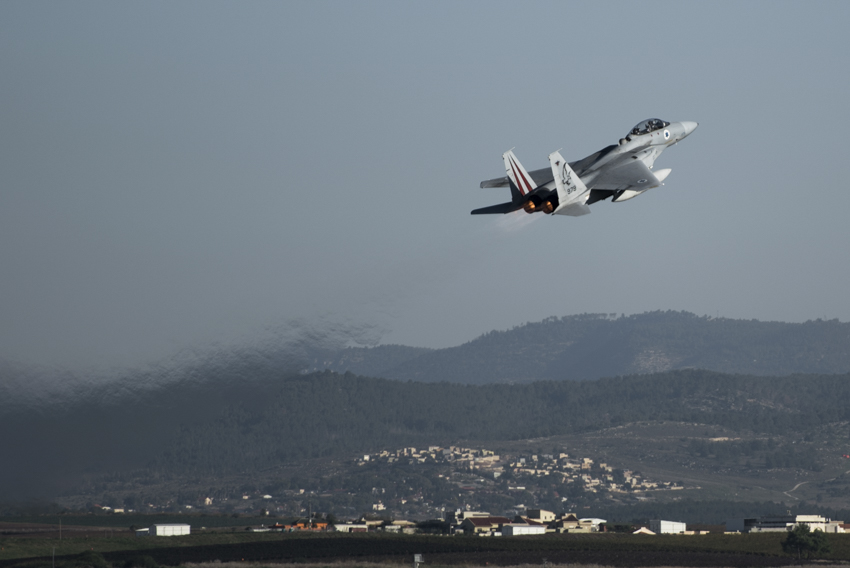
Use of generic means easily moved from arena to arena: Standoff capabilities can be moved from arena to arena more easily. The air force takes off from the same bases for strikes in the south, north, and second and third circles. Active defense is built in layers that address near and distant threats. This is also true of the benefit that can be derived from intelligence and cyber efforts. Therefore, the IDF can use capabilities developed according to such an approach with respect to a variety of threats and theaters, in contrast with the need to adapt ground forces to different operational arenas.
Possibility of reducing collateral damage: Most of Israel's standoff capabilities are precise capabilities. Along with excellent intelligence, they enable maximal influence on the level of collateral damage caused in strikes – which could have great significance in how the campaign is seen by the world and in maintaining the external and internal legitimacy for operation. This is in contrast to a campaign in close maneuvers, which involves close contact with the territory, is waged against an enemy that disappears among the civilian population and operates out of it, is marked by intelligence gaps, and incurs the need to carry out rescue operations. All these increase the danger of a large number of civilian casualties on the other side.
A counter-argument to this last point is that international tolerance for collateral damage from Israeli actions does not depend on dry numbers alone. Massive long-distance bombardment of Hezbollah rocket and missile targets, most of which are hidden in built-up areas and even in houses occupied by civilians, could cause severe damage to civilians within a short time. The international response to this could be more serious than a large number of casualties in contact battles in an urban area. However, in principle, to the extent that the consideration of harm to non-combatants dictates decisions in fighting, long-distance operations leave Israel with a greater degree of control in the situation.
Disadvantages of the Standoff Approach
Prolonged campaign and damage to the home front: The campaigns since the Second Lebanon War, all waged according to a standoff approach, provide a clear example of this disadvantage. Ground maneuvers, if they were carried out at all, were late (about a month after the beginning of the campaign in the Second Lebanon War), limited, not sufficiently ready, and designed for objectives with an ill-defined operational purpose. This resulted in long campaigns without a sense of a genuine achievement.
The most serious consequence of a prolonged campaign is the damage to the home front. The enemy's firepower capabilities in the northern scenario are such that even given the best efforts against its becoming armed with precision weapons and increasing the acquisition of interceptors, the Israeli home front will suffer much heavier damage than it has so far, in losses and in the disabling of critical infrastructure. Even if the number of casualties is lower than existing forecasts of many hundreds killed, this damage could intensify the public's hard feelings and significantly undermine Israel's deterrence.
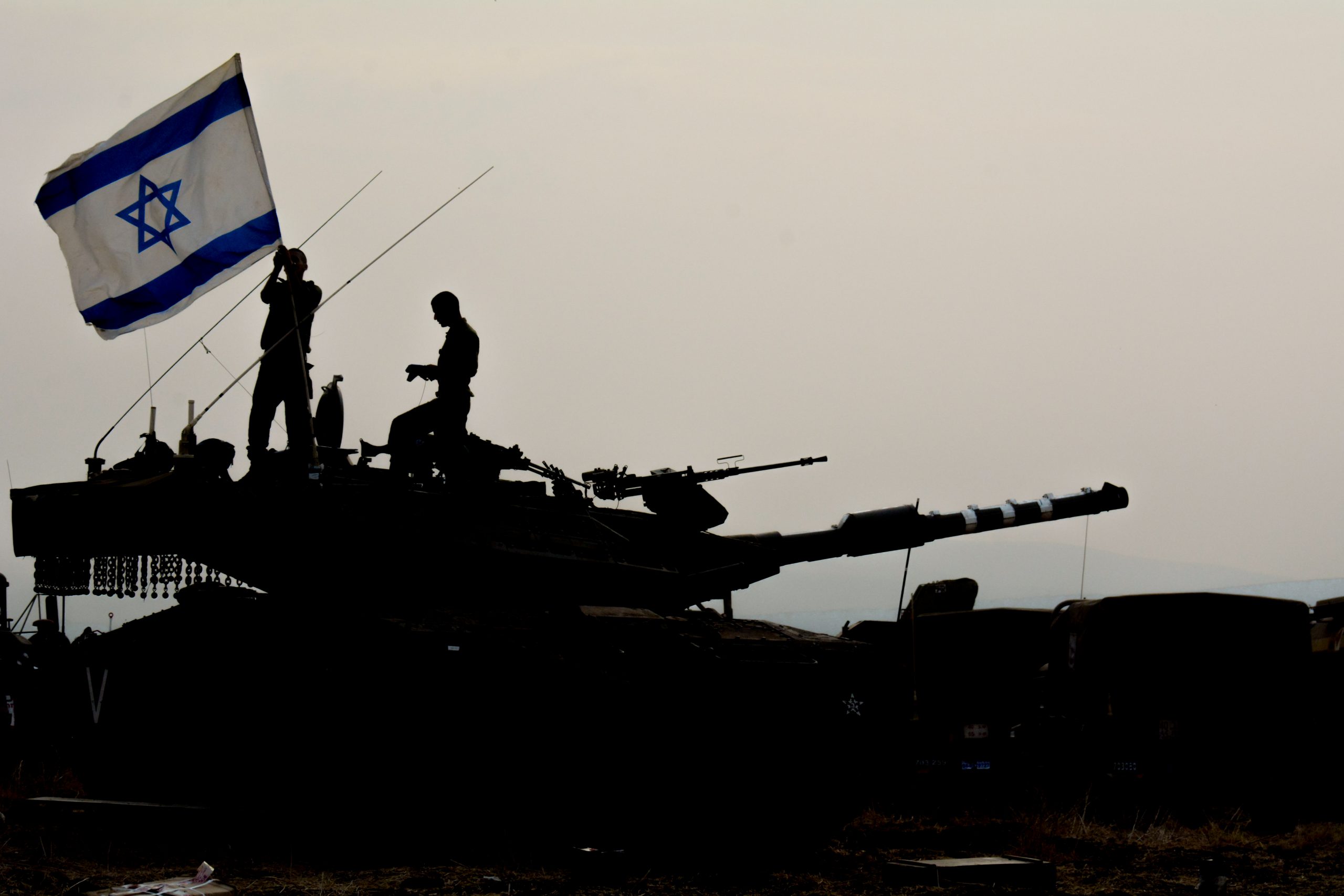
In this sense, there is something misleading about Israel's last few operations in the south. The active defense systems against missiles and rockets and the ground barrier against tunnels provide a sufficient response to the current threat to the home front posed by Hamas/Palestinian Islamic Jihad. This enables a prolonged campaign (51 days in Protective Edge, 12 days in Guardian of the Walls) with a relatively small number of casualties in the home front.
However, the very length of the campaign provides the relatively weak enemy with a cognitive achievement, which in Guardian of the Walls compounded its significant achievements in the internal arena. And most important: in the northern scenario, against an enemy with 150,000 rockets, missiles, and attack drones aimed at all of Israel's territory and especially its north, Israel will not be able to afford a long standoff war – both in terms of the harm to the home front and its implications for the sense of victory in the war.
Prolonging the campaign could even lead to a situation where due to public pressure and a sense of stagnation, a limited and weak maneuver is carried out that is not aimed at a genuine achievement but comes merely in response to the concern that the IDF is not engaging in maneuvers because it is afraid of doing so, as in the Second Lebanon War.
Both sides sense the lack of Israeli victory: It is almost impossible for standoff campaigns to end with a clear victory that unseats the enemy's desire to fight. The large number of enemy casualties does not necessarily create an advantage: in today's asymmetric campaigns, long-distance killing using means that the enemy cannot rebuff does not create a sense of helplessness on its part, but rather intensifies its perseverance and furthers the political campaign against Israel, replete with accusations of its disproportionate use of force, harm to civilians, and even war crimes.
Time after time, including in Guardian of the Walls, the military establishment averred that when the enemy sees the damage it has suffered at the end of the campaign, it will recognize its defeat and be deterred from the renewal of fire. Time after time this assessment has proven wrong, as there was nothing substantive to base it on other than a fervent wish. In contrast, the enemy feels a sense of real achievement in the fact that it has survived over time against the strongest army in the region, denied it a victory image, and succeeded in harming Israel – which not even the largest Arab armies accomplished in the major campaigns.
After Guardian of the Walls, the question should certainly be raised about the implications of a prolonged campaign with heavy fire for internal developments in Israel, friction between Jewish and Arab citizens, and the possibility of heavy rioting in the West Bank. And as we saw immediately after Guardian of the Walls, the physical damage that the IDF caused did not deter Hamas from almost immediately renewing the incendiary balloons.
Intensifying international pressure: As the campaign goes on, and in particular because the casualties suffered on the other side (including non-combatants) are several times greater than the harm to Israel, international pressure to end the campaign could intensify, including under conditions that are disadvantageous for Israel and without a real achievement or possibility of reaching one in a political process at the end of the fighting.
The Advantages of the Stand-in Approach
Possibility of a decisive physical and cognitive achievement: The unavoidable conclusion from the last few campaigns is that such an achievement is only possible when the enemy encounters the full force of the IDF, not only unseen weapons that sow destruction from a distance. Physical presence on the ground, the enemy’s sense of threat and pursuit in every place, and the danger to the survival of its most important systems could give the enemy a sense of conflict with a much stronger adversary, reduce its desire to fight, and instill the cognitive awareness that the path of armed struggle against Israel is an existential threat that can lead it to its destruction.
Shortening the duration of the campaign: Since 1982, the stand-in approach, ground maneuvers, and the capture of territory have been identified with the danger of pointless long-term entrenchment in the quagmire (in Lebanon) or responsibility for the fate of millions of civilians in a territory that is not ours (the Gaza Strip). However, in truth, fast and decisive maneuver is a necessary condition for shortening – and not prolonging – the campaign: whatever the definition of the achievement is, it is reached more quickly when all of the force is used from the outset of the war and not only as a possible subsequent option, engaging with the enemy and bringing the war to it.
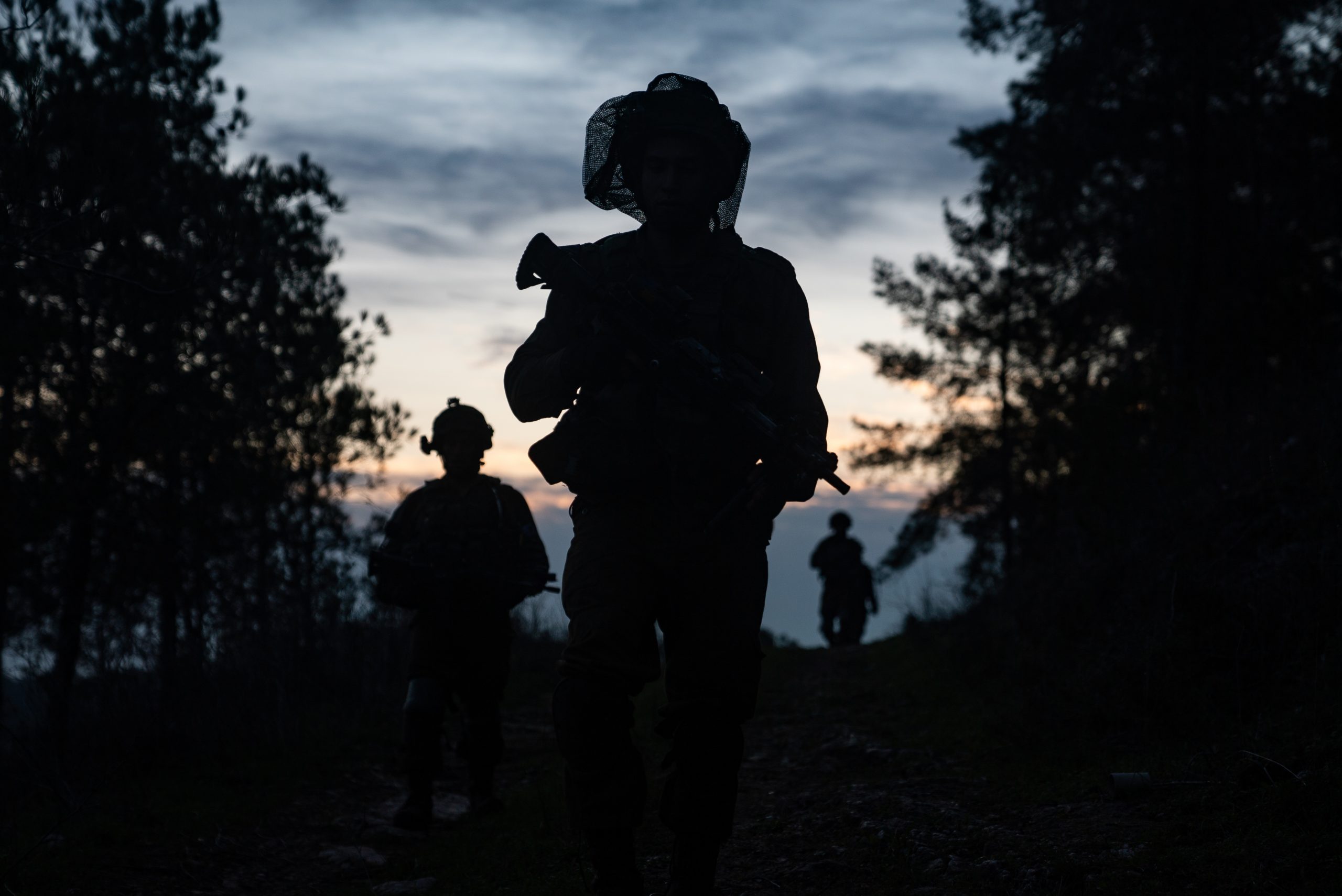
Compatibility with the spirit of Israel and the IDF: A balance between the two approaches must also consider the nature of both Israeli society and the IDF. Fundamental Israeli concepts regarding military victory developed in large campaigns. In addition, the Israeli public is well-aware of the gaps in strength between Israel and its military enemies – an awareness that increases the expectation of a fast, clear, and decisive victory. The campaigns of the last few years have not met these criteria in terms of time and in terms of the expected achievement. It is not surprising, therefore, that they have been accompanied by a sense of missed opportunity. This fact is important not only in its public-political aspect, which should not be underestimated in the context of decision making processes, but also because the enemy, whose achievement lies in enduring in the face of such a superior force, derived an additional cognitive achievement from the way that Israeli society, which is open and democratic, perceived campaigns and their results.
This situation has created mutual deterrence on the northern and southern borders, which adds to the frustration: how can it be, Israeli citizens ask themselves, that organizations that are much slighter in resources and in strength are deterring us no less than we are deterring them, and perhaps even more so?
At its best, the IDF is a surprising, cunning, and proactive army. The aversion to maneuver warfare has created a situation in which the enemy knows well what we intend or do not intend to do. A clear example was in Guardian of the Walls, when Hamas's knowledge that the IDF does not intend to maneuver into its territory ruined the feint that was meant to cause large numbers of its operatives to go underground, followed by significant damage to them in an aerial bombardment.
By nature the IDF is an army that aspires to offense, cunning, and undisputed victory. This stems both from its history and from its character as a people's army that wages campaigns on Israel's borders and doesn't operate as a professional expeditionary force overseas. Values such as assault, the reach for decisive victory, commanders leading from the front, and other cornerstones of the IDF's basic culture fit the type of fighting that is suitable for it – fast, powerful action that leads to a clear, unequivocal achievement.
The Disadvantages of the Stand-in Approach
Larger number of casualties among the fighting forces: Ground maneuvers and close operation in other dimensions as well (air, sea) are inevitably accompanied by casualties among our forces. It is beyond the scope of this article to analyze the sensitivity of the Israeli public to losses in battle, but it is important to remember that in previous campaigns the fear of casualties caused hesitation in the senior military and political leaderships. Ultimately ground maneuvers were conducted at a late stage and in a way that was not capable of reaching substantive achievements, and the losses that were suffered were to a large extent seen as unnecessary.
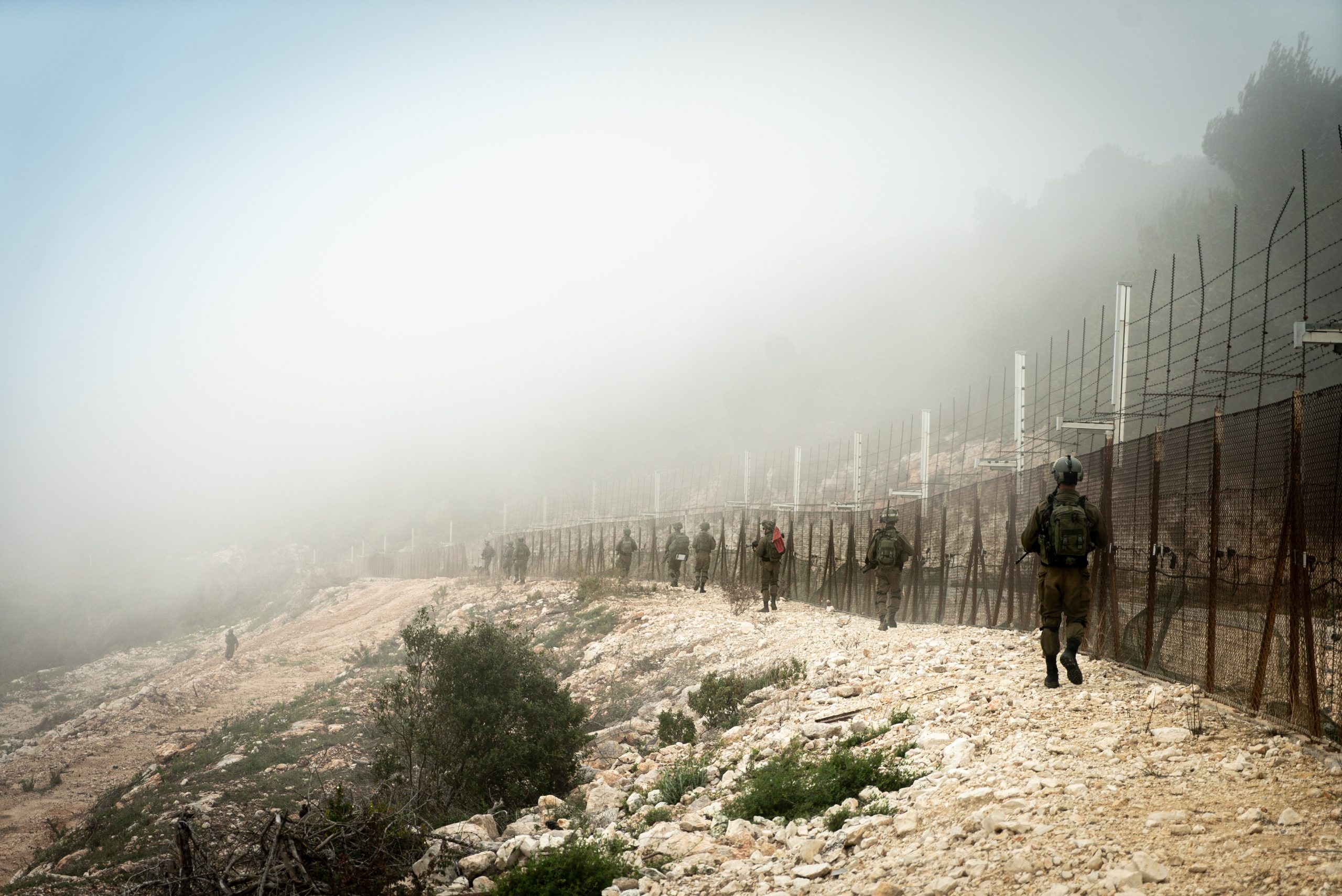
The problem of exit strategy and becoming mired: All use of force in enemy territory, in an era in which victory is not clear and there is great doubt about reaching a settlement after the fighting, is accompanied by the question of how to end the operation. Stopping the fighting is easy and controlled in standoff warfare – we just stop firing and attacking, which is entirely in our control. But when forces are on the ground and in contact with the enemy, and the lines of logistics and retreat are exposed to attack, the situation is more complex.
Gaps in existing preparedness: Despite the efforts in recent years, there are still real gaps in the IDF's preparedness for maneuver warfare. While the IDF excels at military buildup for standoff warfare and in using it as part of the campaign between wars, it is not possible to attain the necessary achievement in a significant campaign without closing these gaps, as well as a willingness to use the variety of capabilities quickly and decisively. The air force also needs to renew its stand-in doctrine, in light of the increasing air defense capabilities that the enemy has put in place and the escalating cost of precision munitions used in counter fire.
Key Points for any Operational Plan
Without exposing the IDF's operational plans, there are issues that must be emphasized in order to achieve campaign objectives, including the following not classified issues:
Strong defense and denial of enemy achievements: In every plan and scenario, special emphasis should be placed on thwarting and completely repelling the enemy's efforts to attack within our territory, as the temporary capture of a civilian community or military system could create a significant "victory image" for the enemy. In the Gaza Strip, as was already proven in Guardian of the Walls, it is possible to achieve this through air defense and the underground barrier, but thwarting Hezbollah's "conquering the Galilee" plan will also require the wise and daring use of ground forces.
This strong defense can also include local attacks to improve positions and thwart the enemy's preparedness at a distance of a few kilometers into Lebanese territory. The way to thwart Hezbollah's plans to conquer the Galilee with commando forces for attacks within Israeli territory against communities and military targets is to meet these forces in Lebanese territory in an offensive action in the zone close to the border. This is an attack that is part of the defensive effort, in contrast with maneuvering deep into the territory for the purpose of victory in the campaign.
Enhancing cognitive efforts: The IDF emphasizes the importance of the cognitive realm in every campaign, and has even established several bodies that deal with this. Every campaign should include a unified cognitive effort that has a clear necessary achievement and that is integrated with the military efforts.
Preparation and early activation of end-of-campaign mechanisms: The absence of a prepared end mechanism was the main barrier to shortening the fighting in the last few campaigns. Reliance on a clumsy international mechanism, or arguments over the identity of the mediator, prolonged the fighting and dimmed the sense of achievement. These mechanisms should be prepared through early political and covert efforts, and should be activated almost at the beginning of a significant campaign, in order to bring them to fruition within a reasonable period of time following the requisite achievement.
Preparing an option of unilateral cessation for every operational plan: In almost every campaign, Israel has faced the question of "how to end it," because the political and military leaderships have been averse to unilateral cessation, which would be interpreted among the public as if we have given up on victory. The result was a prolonged campaign without an additional achievement. Unilateral cessation is possible not only in a standoff campaign, but also in a campaign that includes maneuver warfare. We must return to the incursion doctrine that the IDF used for many years, and for each plan also prepare a possibility of unilateral cessation such that we retain leeway.
Past Decisions and their Significance
The new Israeli government is currently in the midst of a process of passing the national budget, after almost two years of operating without an approved budget. In this context, a joint declaration was made by Prime Minister Naftali Bennett, Defense Minister Benny Gantz, and Finance Minister Avigdor Lieberman about the size of the defense budget for 2022 – some 58 billion shekels. It is not yet clear what the meaning of this number is, as there are many ways to quantify defense expenses.
However, one thing is clear: the sum mentioned is not part of a multi-year budget agreement between the ministries, as was the case, for example, with the Brodet framework in 2008-2012, or the Kahlon-Ya'alon agreement in 2015-2019. This in itself is a problem, but it is especially serious due to the fact that the IDF is operating without an approved multi-year plan, and without an operational doctrine that has also been approved – and within it, as a central component, an operational doctrine for the ground forces. Past experience shows that without a doctrine and structural decisions incorporated within a multi-year plan, budgetary additions will not solve anything, certainly when it comes to such a significant and multi-faceted issue.
The Gideon multi-year plan was designed in large part with an emphasis on stand-in warfare: renewing and strengthening fast and lethal ground maneuvering capability on the front and deep into enemy territory, while investing heavily in elements such as advanced brigade battle teams, the depth corps, and active protection for armored vehicles. The current chief of staff added an emphasis on integrating intelligence and fire capabilities that are quickly transferred to the service of vanguard units.
In contrast, former Prime Minister Benjamin Netanyahu presented, as part of what he called "the 2030 defense doctrine," a main procurement list that comprises almost entirely stand-off elements, with an emphasis on self-defense on the one hand (home front protection, Iron Dome interceptors, barriers on the borderlines, and defensive cyber programs), and long distance attack capability on the other hand (offensive cyber and advanced munitions). Netanyahu mentioned an additional price tag of 40 billion shekels over 10 years to the defense budget to implement the elements that he spoke about; a similar but even higher price tag was presented for the purpose of closing gaps for implementing the Gideon plan and the multi-year Tnufa plan, which has not yet been approved.
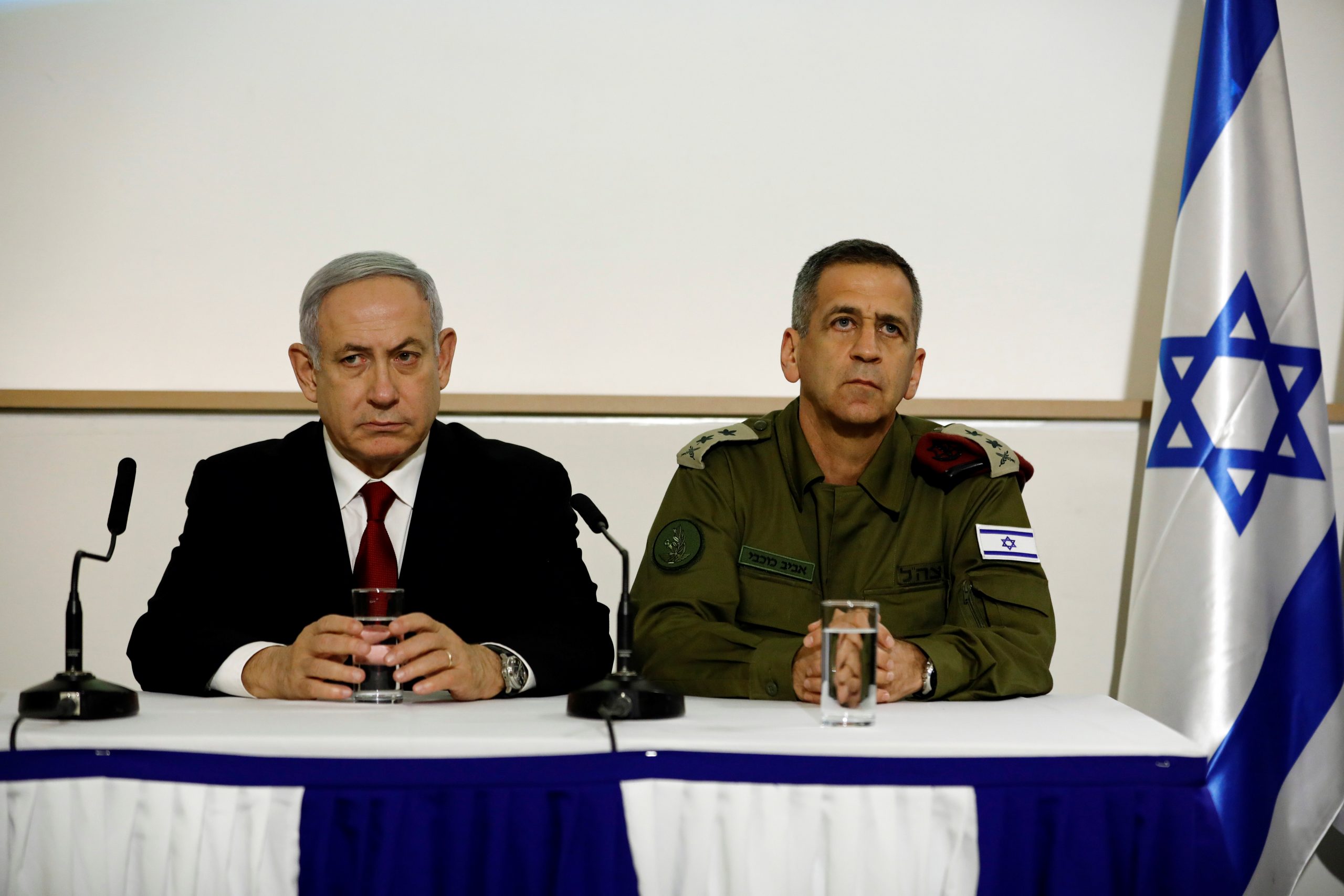
Clearly we cannot have it both ways and develop a sufficient mass for both approaches given limited means. It's also clear, certainly after the campaigns since the Second Lebanon War, that there is substantial concern among the political leadership and the IDF's top echelon regarding the achievements of ground forces and concerns about using them, which dictates a standoff approach – not out of doctrinal decision but out of intellectual stagnation. The continuation of the current trend of adding capabilities broadly, without making decisions at the stage of military force buildup or application, will necessarily lead to a standoff campaign that will be long – in complete contrast with the achievement required, expensive, and with few achievements.
From the little that has been publicized regarding the agreement between the current prime minister and defense and finance ministers, it is difficult to discern any doctrine. It should be remembered that the cabinet and the ministerial committee for military acquisition have already approved plans to develop and acquire a new artillery gun and the Eitan APC, plans that cost billions and aim to strengthen stand-in capabilities. These and other decisions command a considerable portion of the shekel and dollar budget for buildup.
In addition, it is known that dollar distress is expected in the security budget in the coming years, despite the increase to $3.8 billion in the annual aid in the agreement with the United States, due to various components of the agreement that came into force in 2019. There are ongoing commitments in dollars to fund the existing Adir (F-35) deal, the Merkava tank, the Namer APC, and additional categories. The security establishment is in various stages of engagement for the use of the remainder of the US aid for the coming decade, including a squadron of fighter aircraft, new Sa'ar helicopters, and more.
Consequently, we can say with a large degree of certainty that a considerable, almost unprecedented budget addition will be needed, all in shekels, in order to implement the plans that have already been approved and the range of different ideas that have been presented to the political and military leadership. Their total sum is unrealistic and undesirable under the conditions of the Israeli economy, certainly after the COVID-19 crisis that has not yet ended.
More importantly: even if the money is found, at a heavy cost to the economy and society, without doctrinal decision and commitment to the resulting conclusions – both in priorities for building up military force and in the willingness to use it – there could still be gaps in critical capabilities for reaching the necessary achievement according to the vision outlined here.
In the classified version of the document, a clear doctrine was presented regarding which of the proposed ideas are not feasible within a reasonable budget framework, what to discard, and what can be reduced. But it is important to emphasize that in any case, considerable sums should be invested in the coming years in closing the gaps that still remain in the ground army. This investment takes priority over investment in some of the standoff capabilities.
Conclusion
In certain scenarios a significant standoff achievement is possible, including unexpected strikes that cause the enemy damage that it didn’t expect. However, such a limited scenario must not be the basis for e military buildup and application of force, when it is clear that against armies, including the "Hezbollah army," it is a completely different story.
Therefore, the IDF must build and use a diverse, lethal, and rapid land force with independent intelligence and firepower capabilities. In the whole campaign, of course, significant firepower efforts will also be used in all of the sectors that will integrate with maneuver warfare, but they are not and cannot be a replacement in reaching the necessary achievement in the required time frame.
Without a strong ground force that has high-quality formations that allow it to be used quickly even if the full order of battle has not been amassed, and a real willingness to use it almost immediately after the beginning of combat based on original operative plans, Israel will not achieve what it needs in a northern campaign – and the implications for the Israeli home front, Israeli society, and Israeli security could be severe.



